Real Estate Market Report: Third Quarter 2018 – Orange County, NY

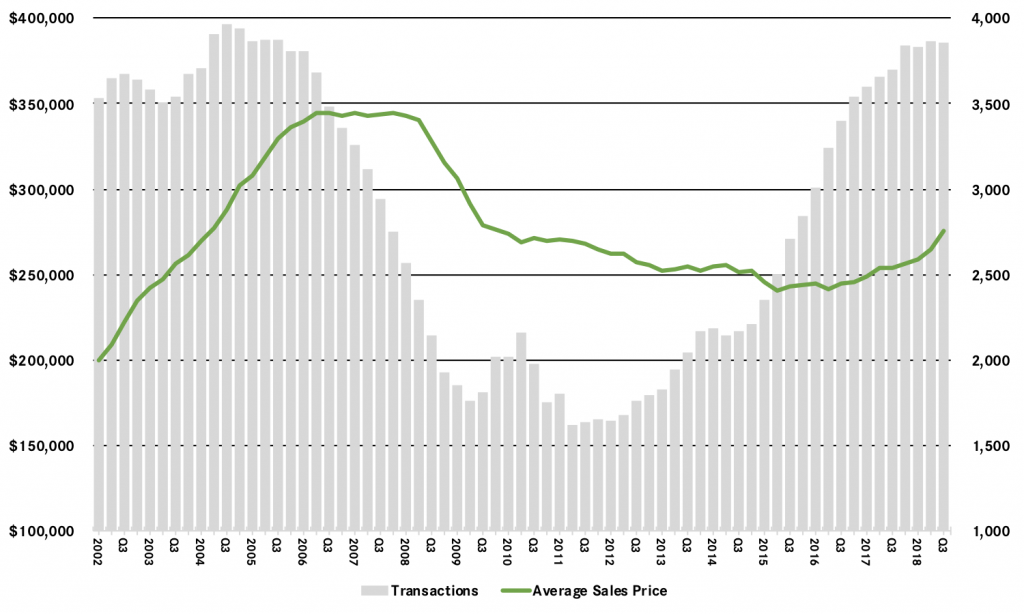 The Orange County housing market soared yet again in the third quarter of 2018, with prices exploding upward. With inventory still very low, and demand high, house prices rose 14% on average, 8% at the median, and 12% in the price‑per‑square‑foot, while condo prices were up 17% on average, 12% at the median, and 14% in the price‑per‑square‑foot. More importantly, after years of frustrating stagnation, we’re finally seeing sustained appreciation trends in Orange County. This was the ninth straight quarter of rising house prices, culminating in a rolling year where prices were up 8% on average, 9% at the median, and 8% in the price‑per‑square‑foot. And we saw the same thing in condos, with the full-year prices up 12% on average, 14% at the median, and 10% in the price‑per‑square‑foot. Going forward, we believe that lack of inventory will continue to hold sales down, but will still drive meaningful price appreciation through the end of 2018 and into next year.
The Orange County housing market soared yet again in the third quarter of 2018, with prices exploding upward. With inventory still very low, and demand high, house prices rose 14% on average, 8% at the median, and 12% in the price‑per‑square‑foot, while condo prices were up 17% on average, 12% at the median, and 14% in the price‑per‑square‑foot. More importantly, after years of frustrating stagnation, we’re finally seeing sustained appreciation trends in Orange County. This was the ninth straight quarter of rising house prices, culminating in a rolling year where prices were up 8% on average, 9% at the median, and 8% in the price‑per‑square‑foot. And we saw the same thing in condos, with the full-year prices up 12% on average, 14% at the median, and 10% in the price‑per‑square‑foot. Going forward, we believe that lack of inventory will continue to hold sales down, but will still drive meaningful price appreciation through the end of 2018 and into next year.
To learn more about Better Homes and Gardens Real Estate Rand Realty, visit their website and Facebook page, and make sure to “Like” their page. You can also follow them on Twitter, Pinterest, and Instagram.
Real Estate Market Report: Third Quarter 2018 – Rockland County, NY
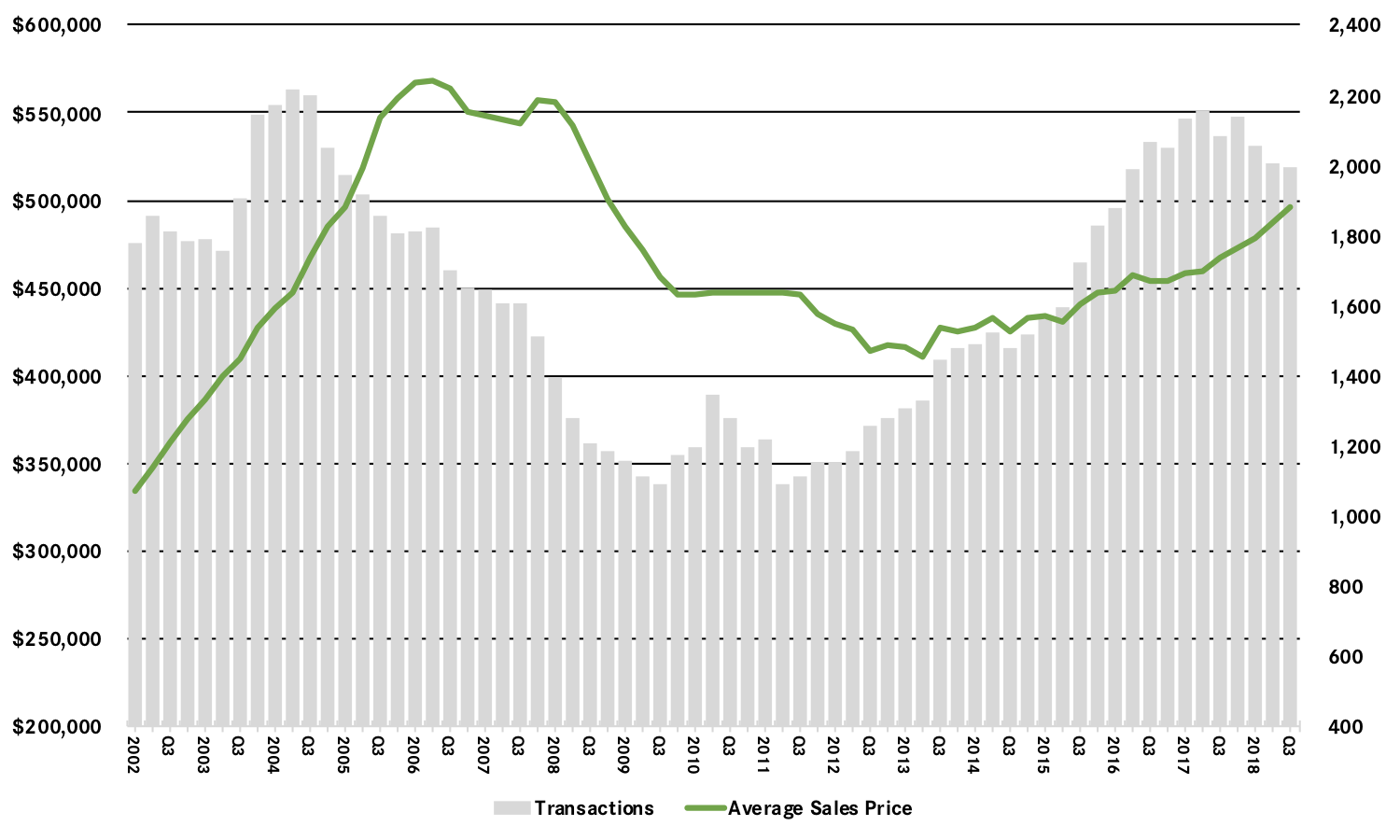
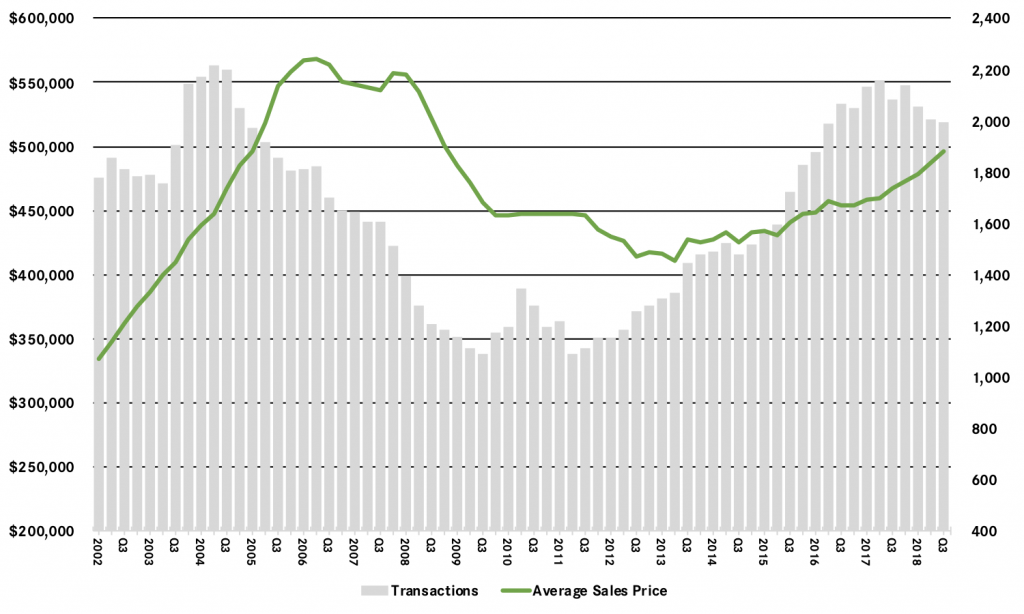 The Rockland housing market had another strong quarter, with prices up, even while a lack of inventory held back sales growth. Sales of houses were down almost 3% for the quarter, and are now down almost 5% for the year. But that’s more a reflection of a lack of supply, not a lack of demand, evidenced by continuing appreciation, with prices up 6% on average and 7% at the median for the quarter, and now up 6% on average and 7% for the year. We are starting to see signs, though, that rising prices might be tempting more sellers into the market – months of inventory rose almost 11%, the first increase in over six years. Going forward, we expect that buyer demand is strong enough to absorb this additional inventory and still post meaningful price appreciation through the rest of the year and into 2019.
The Rockland housing market had another strong quarter, with prices up, even while a lack of inventory held back sales growth. Sales of houses were down almost 3% for the quarter, and are now down almost 5% for the year. But that’s more a reflection of a lack of supply, not a lack of demand, evidenced by continuing appreciation, with prices up 6% on average and 7% at the median for the quarter, and now up 6% on average and 7% for the year. We are starting to see signs, though, that rising prices might be tempting more sellers into the market – months of inventory rose almost 11%, the first increase in over six years. Going forward, we expect that buyer demand is strong enough to absorb this additional inventory and still post meaningful price appreciation through the rest of the year and into 2019.
To learn more about Better Homes and Gardens Real Estate Rand Realty, visit their website and Facebook page, and make sure to “Like” their page. You can also follow them on Twitter, Pinterest, and Instagram.
Real Estate Market Report: Third Quarter 2018 – Westchester County, NY
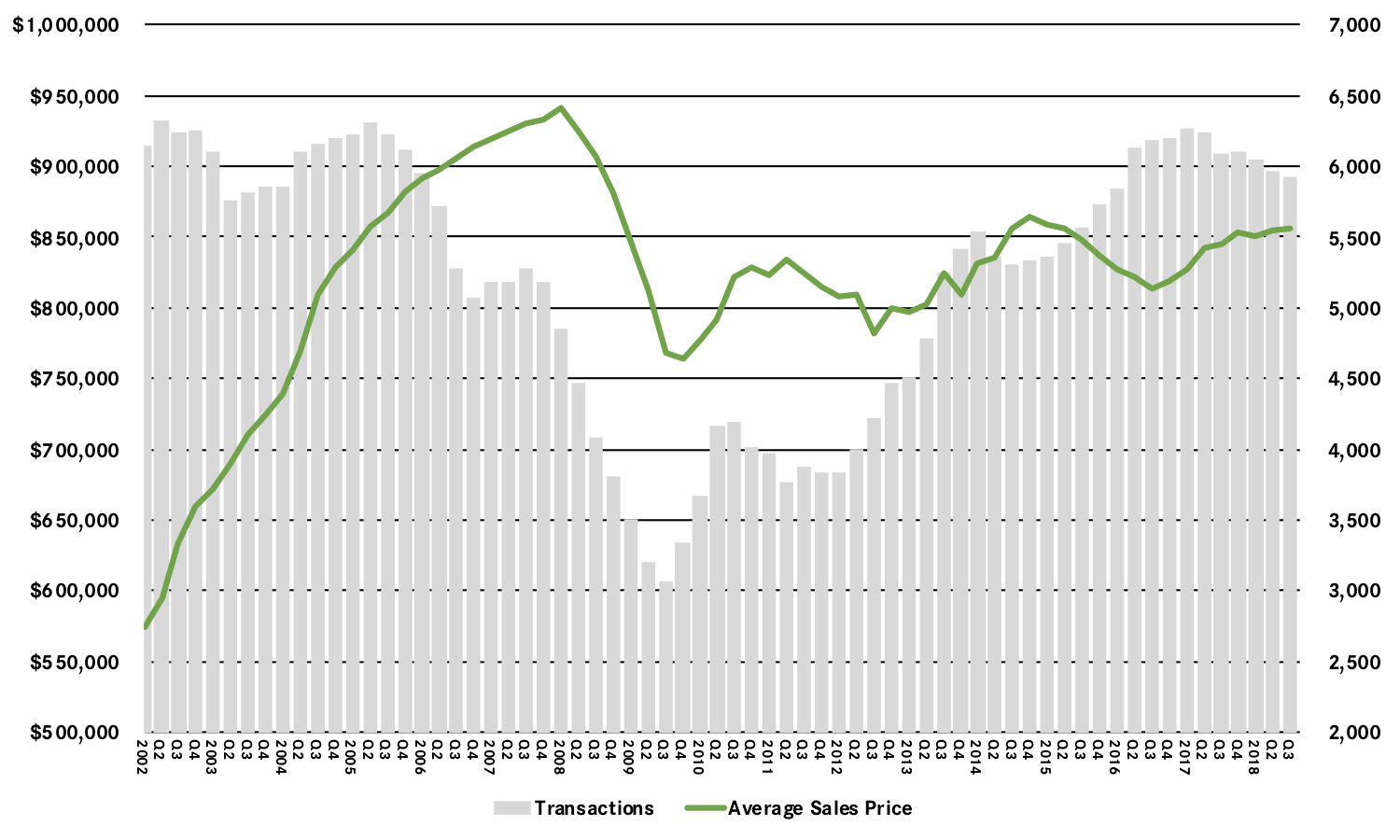
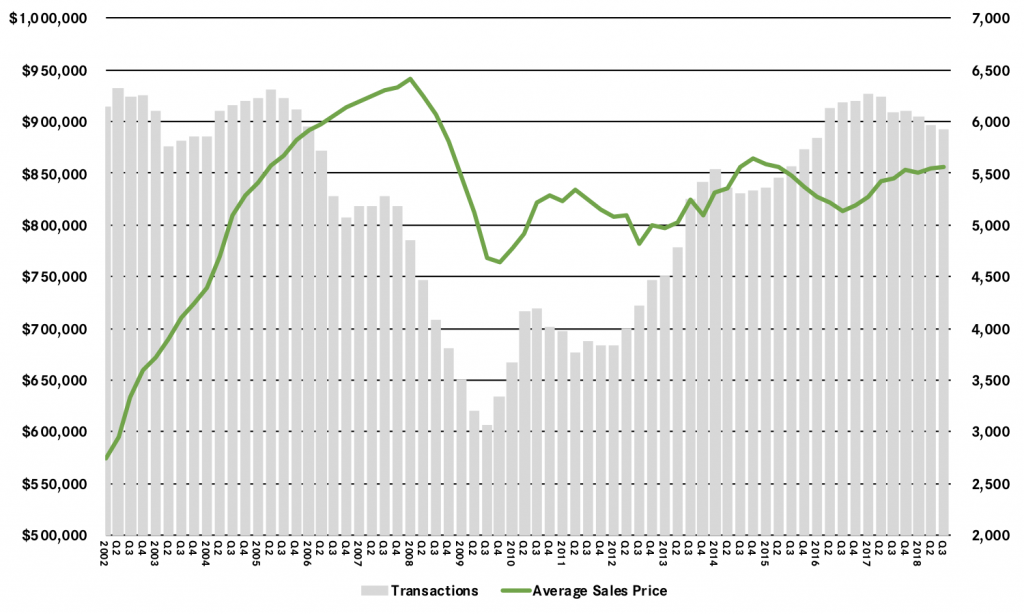 The Westchester housing market held steady in the third quarter of 2018, with a small decline in sales coupled with flat pricing. We believe that the decline in sales comes largely from a shortage of viable inventory, rather than a lack of demand, but it may be that the 2018 tax reform changes have hampered demand in the highest end of the market, increasing the percentage of lower‑priced homes in the mix of properties sold and thereby suppressing price appreciation. That would explain why, for example, average prices are increasing dramatically in the lower‑priced condo (up over 5%) and coop (up almost 4%) markets, as well as the more affordable neighboring counties. That said, tax reform is having only a modest impact on this market, with prices still up slightly for the rolling year. Going forward, we believe that demand is strong enough to overcome the tax concerns and that Westchester will experience a strong end to the year and a robust 2019.
The Westchester housing market held steady in the third quarter of 2018, with a small decline in sales coupled with flat pricing. We believe that the decline in sales comes largely from a shortage of viable inventory, rather than a lack of demand, but it may be that the 2018 tax reform changes have hampered demand in the highest end of the market, increasing the percentage of lower‑priced homes in the mix of properties sold and thereby suppressing price appreciation. That would explain why, for example, average prices are increasing dramatically in the lower‑priced condo (up over 5%) and coop (up almost 4%) markets, as well as the more affordable neighboring counties. That said, tax reform is having only a modest impact on this market, with prices still up slightly for the rolling year. Going forward, we believe that demand is strong enough to overcome the tax concerns and that Westchester will experience a strong end to the year and a robust 2019.
To learn more about Better Homes and Gardens Real Estate Rand Realty, visit their website and Facebook page, and make sure to “Like” their page. You can also follow them on Twitter, Pinterest, and Instagram.
Real Estate Market Report: Third Quarter 2018 – Westchester and Hudson Valley
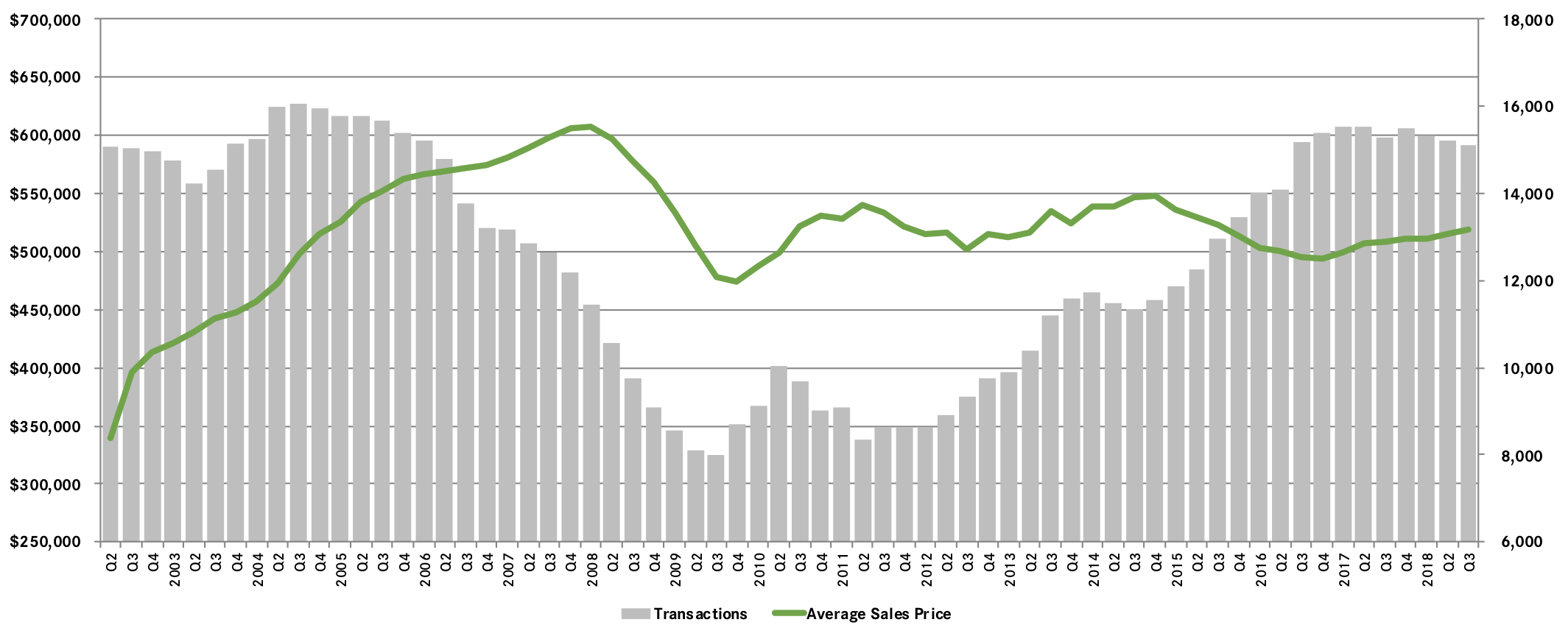
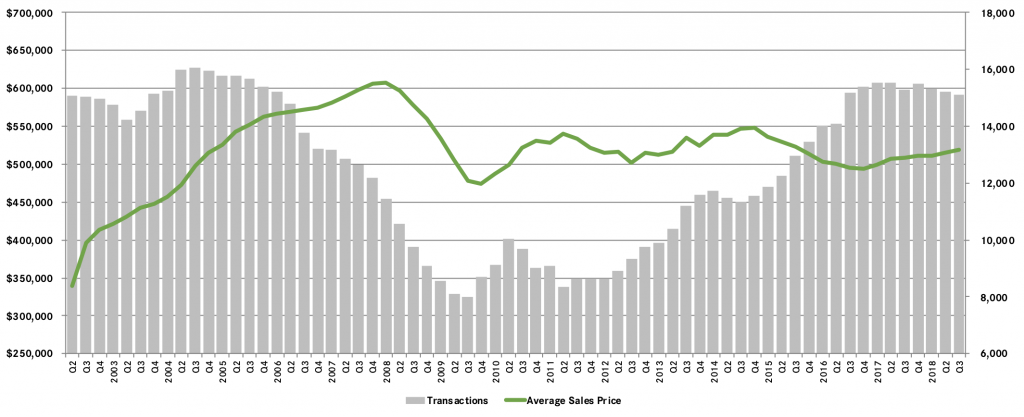
Despite concerns that the 2018 tax reform law would undermine housing values, Westchester and the Hudson Valley held steady in the third quarter, with prices rising throughout the region and up dramatically in some counties.
Some analysts have expressed concerns about the effects of the 2018 Tax Reform law on our regional housing market. The tax law capped the deductibility of state and local taxes and reduced the mortgage interest deduction, which particularly impacts high‑tax areas, like Westchester and the Hudson Valley. Indeed, those analysts might see evidence for this theory in the third-quarter results, with regional single‑family home sales falling almost 2% from last year, and down in almost every individual county.
For the most part, though, sales are down because of a lack of supply, not a lack of demand. Regional inventory levels have gone down 25 straight quarters, falling from a high of around 16 months to the current six months. Quarter after quarter, inventory went down until we reached a point where we have a shortage of desirable homes for sale. That’s what’s holding back sales – a lack of “fuel for the fire.”
How do we know that falling sales aren’t the result of slackening demand from the impact of tax reform? A couple of reasons:
First, this trend of declining sales predates tax reform. We’ve been tracking falling sales for almost two years, with regional sales down, in five out of the last six quarters, well before the passage of tax reform in late 2017.
Second, sales are down in all markets, not just high‑priced markets. Tax reform would not explain why sales are down even in the lower‑priced markets, where most buyers do not itemize taxes in a way that they’d be affected by changes in deductibility. And yet, quarterly sales were down more in Rockland and Dutchess than they were in Westchester.
Third, prices are up in almost every market segment. Regional average sales prices were up almost 3% for houses and 5% for condos in the third quarter and were up (in some cases dramatically) in every individual county for almost every property type. If tax reform had sapped demand in the market, we’d be seeing flat or declining pricing, not robust appreciation.
All that said, tax reform might be having a small impact on the very high end of the market, where the loss of deductibility for mortgage interest and local taxes hits the hardest. Price appreciation was more pronounced in the lower‑priced markets, with single‑family average prices rising 11% in Putnam, 6% in Rockland, 14% in Orange, and 7% in Dutchess. Meanwhile, Westchester’s single‑family home pricing was up just a tick on average, and only fell 1% at the median. We’re talking about a marginal, not a major, impact. Prices aren’t rising at the rate they are in the lower‑priced markets, they’re basically flat, not falling.
Moreover, inventory is starting to respond to these rising prices. For the first time since 2012, inventory levels went up this quarter, which illustrates fundamental economic market theory: If demand is strong, and supply stays steady (or goes down), prices will go up. And when prices go up, new inventory will come onto the market. That’s what we’re seeing now: After years of decline, single‑family inventory was up in almost every county in the region, stabilizing near that six‑month level that usually signals a balancing market.
Going forward, we believe that the appetite in the market can handle both the impact of tax reform and this increased inventory while still driving continued price appreciation. With strong economic conditions, relatively low‑interest rates (and the specter of rate increases on the horizon), and pricing still at attractive 2004‑05 levels, we expect a robust market through the end of the year.
To learn more about Better Homes and Gardens Real Estate Rand Realty, visit their website and Facebook page, and make sure to “Like” their page. You can also follow them on Twitter, Pinterest, and Instagram.

 Facebook
Facebook
 X
X
 Pinterest
Pinterest
 Copy Link
Copy Link
